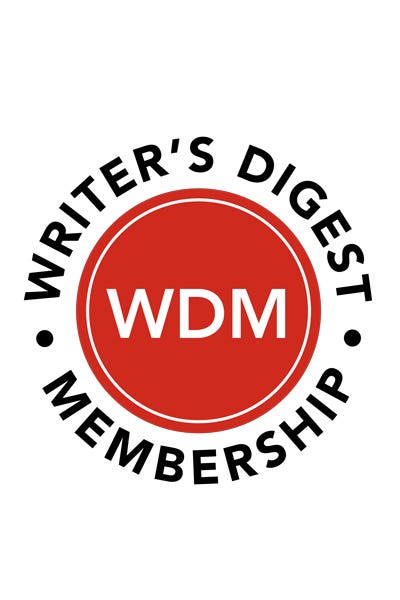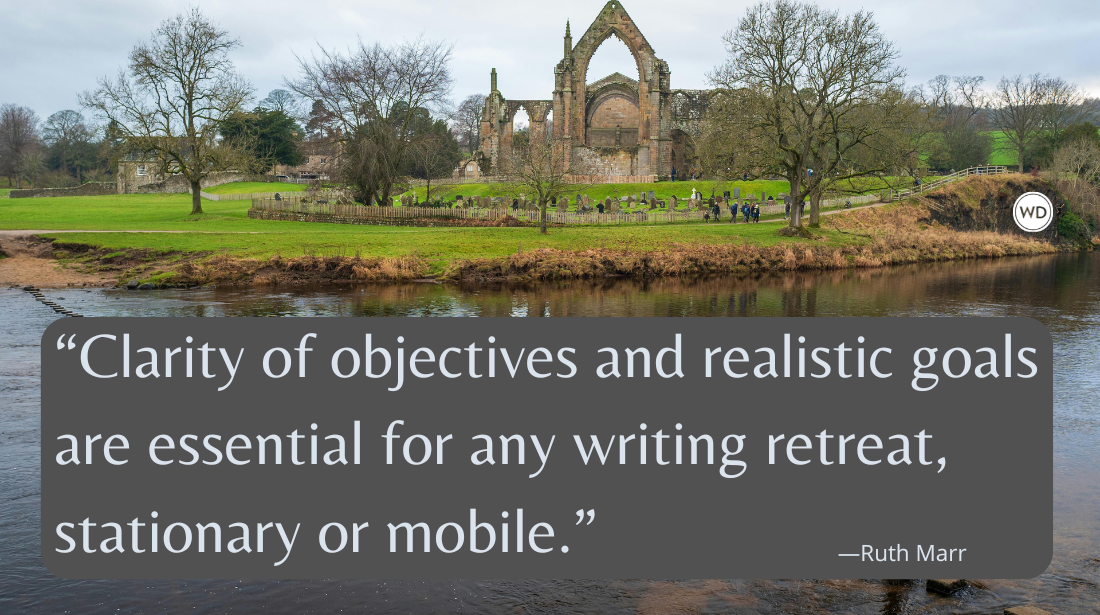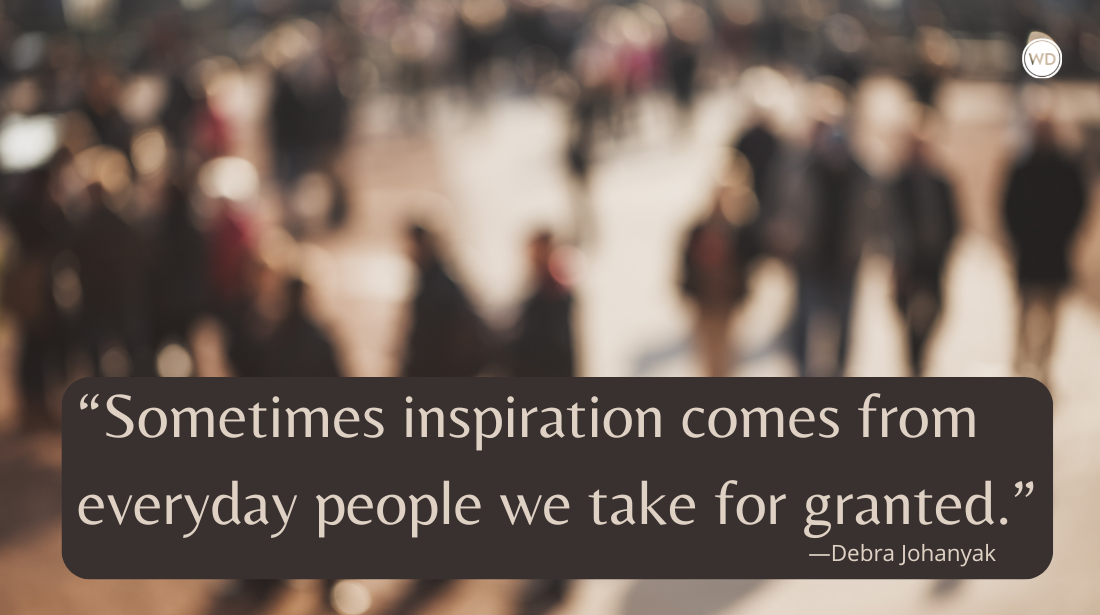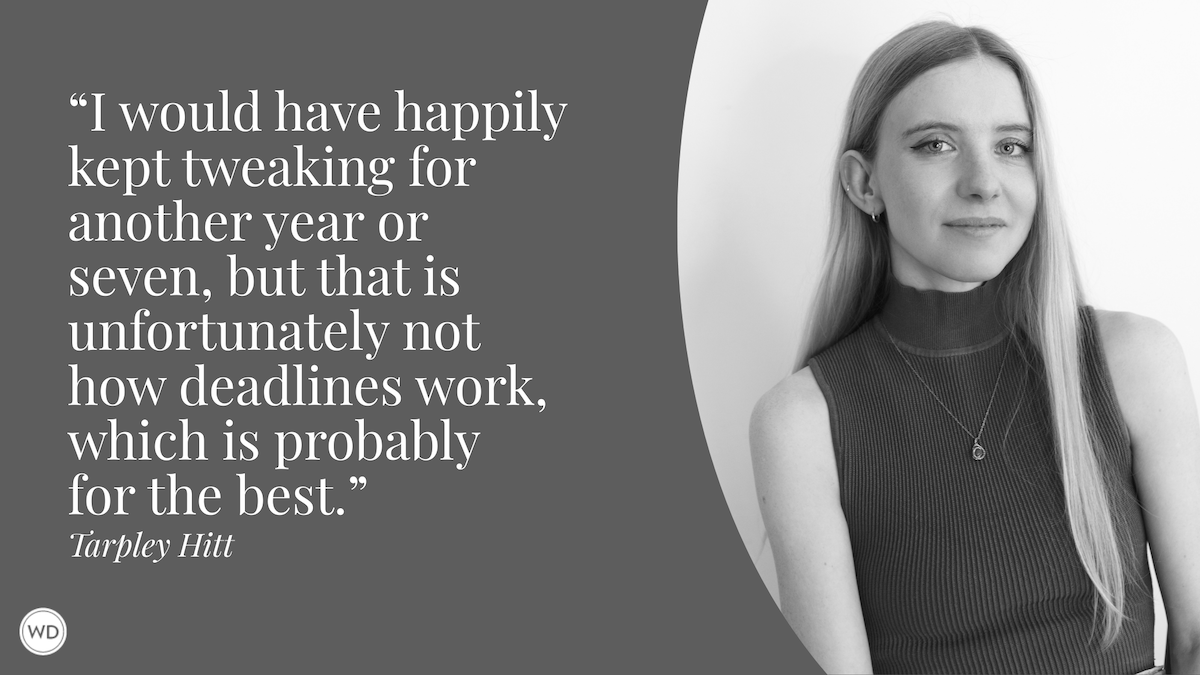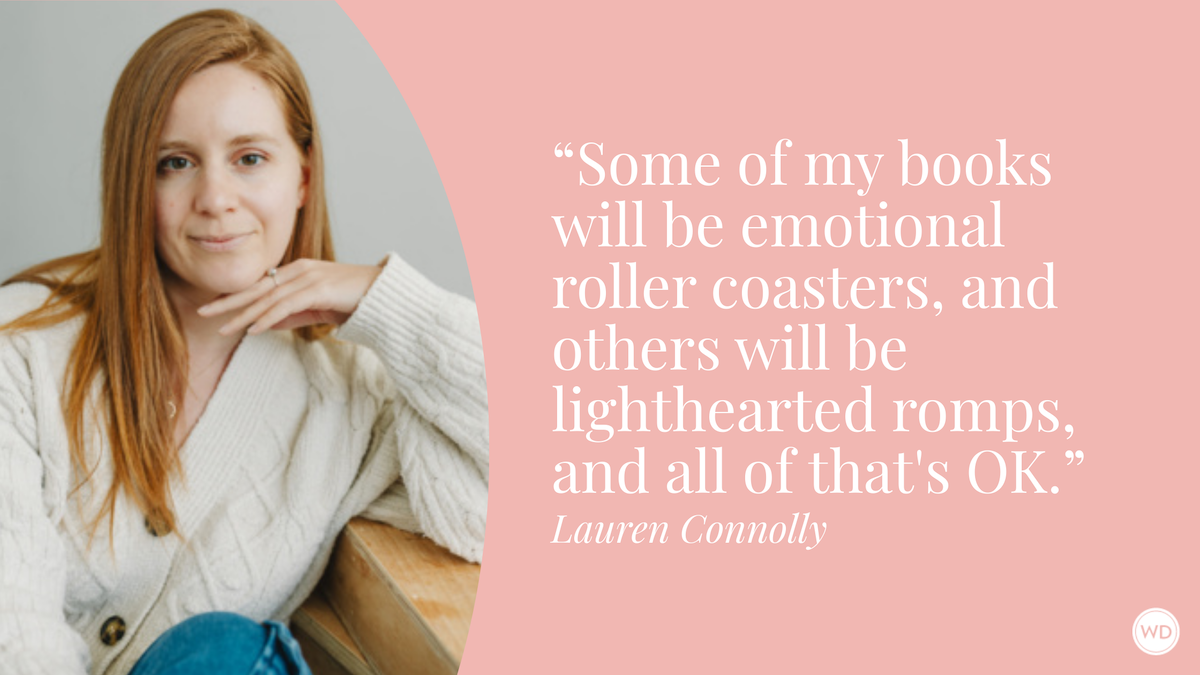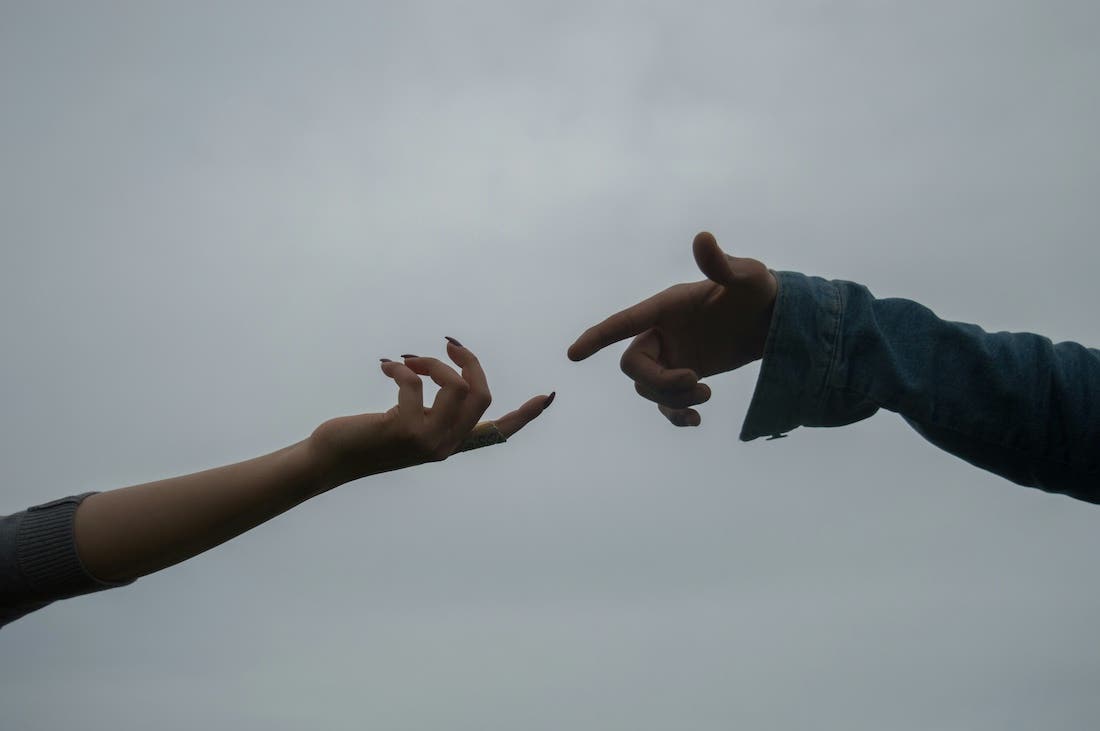On Co-Writing a Novel: Twice the Fun, Half the Work
Co-authors Kat Hillis and Rosiee Thor discuss their co-writing process along with three ingredients to a successful collaborative project.
In the dead of night I wake, sweaty from the summer heat, plagued with visions. Well, a pun, or a funny scenario, or a new iteration of a running joke. Not even slowing down to put on my (very necessary) glasses, I struggle to unlock my phone (which does not recognize me without the aforementioned thick lenses). Hands shaking, I text the thought I’ve had to my co-author, Rosiee Thor, who’s probably asleep even considering the time difference. At last able to rest, I fall asleep again.
When I wake, I remember none of this, but mid-morning in the central time zone I get a reply from Rosiee, reminding me of the joke. Without a co-author to send unhinged messages to in the middle of the night, how much would be lost?
When I tell people I co-wrote a book, they always ask the same question—one which, fortunately, I love answering: How does that work? Writing a book on your own is hard enough, and the added complication of a second author seems intimidating from the outside. Professional authors are used to incorporating feedback from multiple sources, but ultimately all the words on the page are ours. How, then, can you go about sharing that deeply personal experience with someone else?
How That Works (for Us)
With Dead & Breakfast, Rosiee and I are lucky enough to have complementary skillsets. I love drafting, but I tend to write very skeletal first drafts that leave out a lot of detail. Rosiee loves revising and turning bad writing into good writing. We plan the books together (more on this later), then I draft a chapter. Rosiee revises it. The next morning I read the new shiny version and bang out the next. It helps that I’m two time zones ahead of them and work first thing in the morning. With this process, we fall into a rhythm, and soon enough, the book is done.
Sounds easy, right? This is where you’re waiting for me to talk about how it’s not easy, but that would be a lie. Okay, it’s not easy-easy, like microwaving a burrito, but compared to writing a novel solo, it kind of is.
A huge part of it for me was having a built-in partner to discuss plot snags with and catch issues early. No more using friends, family, or pets as a rubber ducky—I had someone who knew the book as well as I did to bounce ideas around with, and to call me out when I was being lazy instead of good.
It was also fun. Writing is a bit like playing with dolls, albeit a more sophisticated process, and co-writing is like having a friend over to join in the make-believe. Rosiee and I are both funny, on and off the page, and when we collaborate, it ups the humor exponentially. But even if our co-authored project had been darker and more serious, there still would’ve been a lot of joy to be found in sharing the story as it unfolds.
We’ve learned some lessons as we continue to write this series together, many of them dealing with the practical day-to-day. We write everything down, from eye and hair color to layout of cities/buildings/locations, to running jokes we’ve used. With two people, it’s easier to forget the little stuff, and as the series stretches on, we don’t want to have to wade through several volumes to find a tiny detail one of us added but can’t remember.
It was also important for us to get on the same page about technology first thing. We picked a word processor and method of sharing documents that works for us both. Physical proximity isn’t a requirement for co-writing. Rosiee and I didn’t meet in person until well after Dead & Breakfast sold.
How It Can Work (for You)
Confession time: Dead & Breakfast is my debut as an author, but it’s not the first book I’ve written, not by a long shot. It’s also not even the first book I’ve co-written, and Rosiee Thor isn’t my first literary partner. If you’re thinking about co-writing, but you’re worried about logistics, if it’ll be way harder than expected, or somehow ruin your relationship with your co-author, I’ve been there.
Before embarking on my first are-we-going-to-use-a-penname-or-put-both-our-names-on-the-cover adventure, I scoured the Internet for any information on co-writing I could find. I was terrified I’d somehow blow it and my co-author would hate me and then a meteor would hit my house, etc.
Take a deep breath. There are a lot of ways to approach co-writing—as many ways as there are author pairs, I’m guessing—but I’ve found some common strategies that apply to the process no matter who my co-author is.
Splitting the Work
Let’s dig into what people are really asking with the “How does that work?” question: How do we split the work? Some people ask if we write alternating chapters. Writers are thinking about the messy concept of drafting versus revising, and how hard it is to quantify work on a novel in the first place. Hopefully no one assumes it’s like that episode of Columbo where one guy actually writes the books and the other is the PR hype man, which isn’t a good division of labor, and ends, for them, in murder.
Our process works because of our strengths as writers and the fact the narrative is told from a single point of view. I’ve co-written a project that had multiple point of view characters, with an author who’s a fast-drafter like me. For that, we each took a few characters and wrote their chapters, bouncing back and forth. The first draft took us three weeks. To revise, we swapped characters and rewrote the whole thing, filling in everything we’d skipped over. The result was a novel that readers couldn’t tell was written by two people because our styles had blended in the revision stage. I know of a co-author pair in which one author had written a very detailed outline (or zero draft) tens of thousands of words long, and the other author went through and expanded it, then they revised it together.
To decide how to divide work, play to your strengths as individuals. Some time after we’d finished Dead & Breakfast and were starting work on the second book in the series, Rosiee and I both confessed to each other that we felt we were getting off easy while the other person was doing all the “real” work. In truth, we’re each doing the work of writing a novel, but because we do the part we thrive in, it feels too easy. If you both excel at the same things, like me and my other co-author and fast-drafting, splitting the chapters may be the best way to go. If one of you is a champion of twisty plots but struggles to get words on the page, leave the drafting to the partner who loves getting lost in the rush of a first draft.
However you decide to split the work, be honest with yourself about how it feels. If you find yourself thinking you’re doing it all while the other person kicks their feet up, let them know, and find a new balance. Ideally, you’ll both think you’re the one with the easy job.
Communicating
That brings me to my next essential strategy for co-writing. It happens to be the key to any good relationship, no matter the type: communication. Luckily, we’re all really good at this, and no one ever struggles to be honest with someone close to them! This is why miscommunication never features in fiction, because it’s a non-issue. Ha ha.
As a species, humans never stop communicating. We invented languages—written, spoken, signed—and that doesn’t even cover body language, which communicates all kinds of things we’re not always consciously aware of. But we all know commenting about the weather to the person ahead of you in line at the DMV isn’t the same as a we-should-break-up conversation. Communicating hard stuff is… hard. Being emotionally vulnerable is hard, on the page and off.
If you’re going to co-write a book or a series, you need to have a foundation of trust with your partner. You also need to be able to push back against choices that you feel are the wrong ones for the book. Maybe you push back, there’s a discussion, and you end up seeing it from their perspective. Maybe they see if from yours. No matter the outcome of any conflicts, you can’t be afraid to voice concerns. If one co-author feels like they have to be a yes-man the whole time, it won’t work. The book will suffer, and so will your relationship.
As long as you’re both honest, and you remember that, like all good writing feedback, it’s coming from a place of wanting the book to be the best possible, you can find a solution to any disagreement about story direction. It helps if you have a neutral third party to ask in an emergency. Remember the book I co-wrote in three weeks? Rosiee happened to be our tie-breaker in case of dispute, which we hit at the midpoint. Both of us had a different idea of what the big emotional underpinning of the midpoint would be, and despite spirited debate, we couldn’t figure out which direction to take it. In explaining the situation to Rosiee, we realized we both had the same thing in mind, we’d just been coming at it from different angles. We all bring our own biases and emotional baggage to the writing process. What matters is you’re willing to compromise for the sake of the shared vision.
Sharing a Vision
That’s the third big ingredient to a successful co-writing experience: having a shared vision. When Rosiee pitched Dead & Breakfast to me years ago, they were sharing it offhand, and made a comment about never actually writing it. Hearing the pitch made me mad in the same way as hearing a really good pun—I wished I’d thought of it!
Later, when they posed the idea of co-writing the series, I was, for lack of a better term, over the moon about it. It’s exactly the sort of project I love to write, and I’d wanted to dip my toe into writing murder mysteries for a long time, but never had an idea grab me by the throat enough to see it through (it still makes me giddy enough to mix metaphors like it’s going out of style).
The pitch was entirely their idea, but the book is ours. We started out building the characters, our duo of vampire sleuths, but every step of the way has been back-and-forth collaboration. Okay, a lot of it is also back-and-forth memes and jokes, yes-anding our way through the mystery plot and world-building and side characters. If you’ve heard of the Rule of Cool, we use the Rule of Funny—whatever idea is most hilarious wins out.
I once told someone about our process (my drafting and Rosiee’s heavy revision after), and they said something that threw me so much I almost didn’t know how to respond: “Wow, you must have no ego, to let someone go behind you and change your words.”
I was confused because they aren’t my words, not even when I draft them. Technically, I write them, yeah, but they’re our words from the start. Rosiee and I plan out each chapter beforehand with a rough bullet-point list of stuff that’s going to happen. There’s a lot of magic and discovery in the drafting (which is why it’s my favorite part), but from the very early planning stages, the book belongs to both of us.
Check out Kat Hillis and Rosiee Thor's Dead & Breakfast here:
(WD uses affiliate links)



